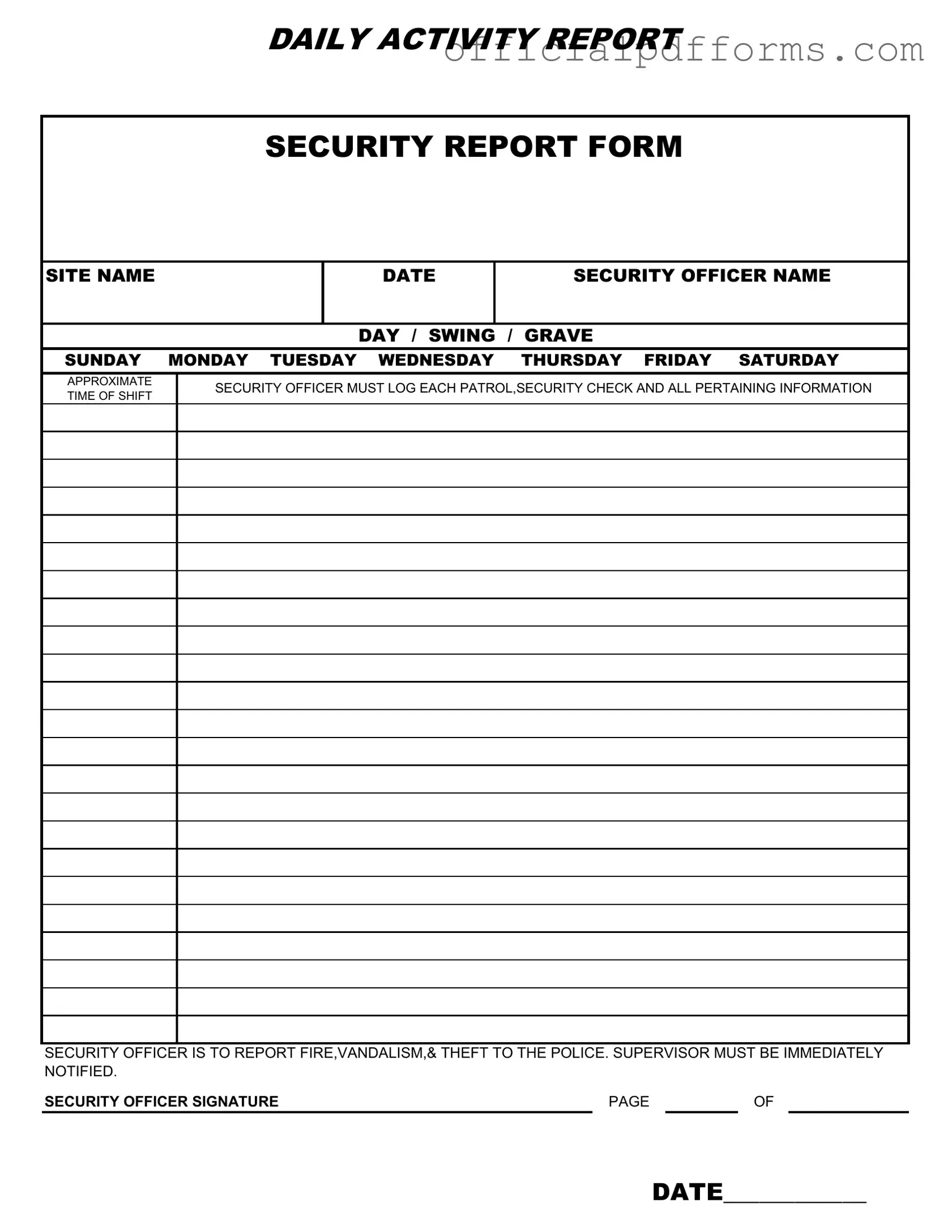Fill in a Valid Security Guard Daily Report Sample Form
The Security Guard Daily Report Sample form serves as a crucial tool for documenting daily activities and incidents at a security site. This form assists security officers in logging patrols, security checks, and any significant occurrences, such as fire, vandalism, or theft. Proper completion of this report not only enhances accountability but also ensures timely communication with supervisors and law enforcement.
To effectively manage security operations, please fill out the form by clicking the button below.
Access Form Online
